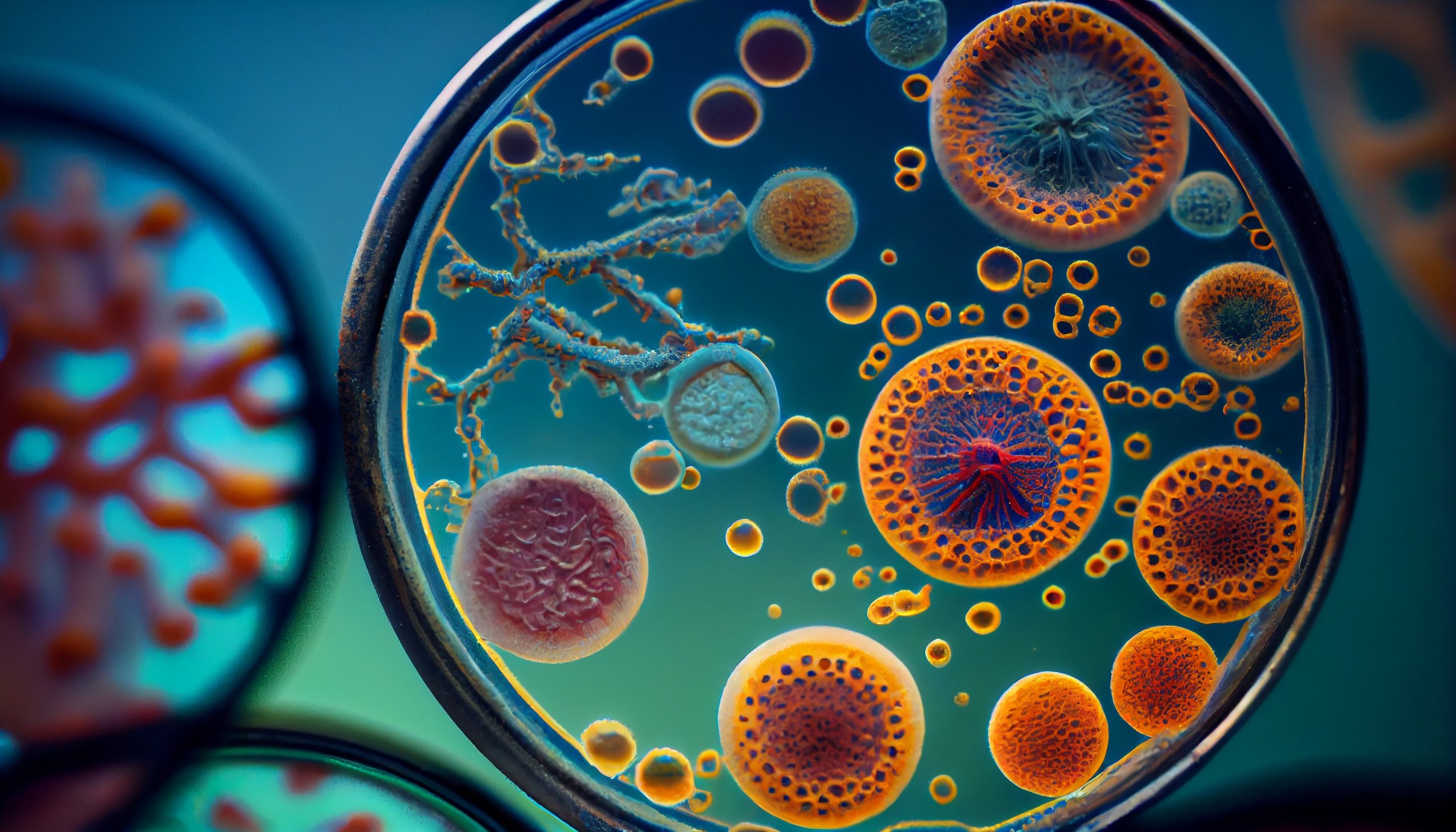The CUET (Common University Entrance Test) Biology syllabus for 2025 is based on the NCERT Class 12 curriculum, providing a comprehensive understanding of various biological concepts. It covers topics from basic reproduction to advanced biotechnological applications, ensuring that students are well-prepared for university-level education in biological sciences. The CUET Biology exam consists of 50 questions, out of which students must answer 40. Below is a detailed breakdown of the syllabus:
Unit I: Reproduction
This unit explores the fundamental processes that ensure the continuation of species, focusing on both asexual and sexual modes of reproduction across different organisms.
Reproduction in Organisms:
- Asexual Reproduction: Simple and efficient reproductive methods in organisms like binary fission, sporulation, budding, fragmentation, and gemmules. Learn about vegetative propagation in plants, an essential process used in horticulture.
- Sexual Reproduction in Flowering Plants:
- Flower Structure: Study the structure of flowers, the reproductive organs of plants.
- Development of Gametophytes: Understand the formation of male and female gametes.
- Pollination: Explore different types of pollination (self and cross), the agencies involved (wind, water, animals), and mechanisms to prevent self-pollination (outbreeding devices).
- Double Fertilization: Learn about this unique feature of angiosperms and its role in seed and fruit formation.
- Post-fertilization Events: Includes development of the endosperm, embryo, seed, and fruit.
- Special Modes of Reproduction: Understand apomixis (asexual seed formation), parthenocarpy (seedless fruit formation), and polyembryony (multiple embryos in a seed).
Human Reproduction:
- Reproductive Systems: Detailed study of the male and female reproductive systems.
- Gametogenesis: Explore the processes of spermatogenesis (sperm formation) and oogenesis (egg formation).
- Menstrual Cycle: Understand the cyclical changes in the female reproductive system.
- Fertilization and Development: Study fertilization, the formation of the blastocyst, and implantation.
- Pregnancy and Parturition: Elementary understanding of pregnancy, placental development, and childbirth (parturition), along with lactation.
Reproductive Health:
- Contraception: Learn about different birth control methods and the need for reproductive health.
- Sexually Transmitted Diseases (STDs): Awareness of diseases like HIV, gonorrhea, syphilis, and their prevention.
- Assisted Reproductive Technologies (ART): Introduction to technologies like IVF (In Vitro Fertilization), ZIFT (Zygote Intra-Fallopian Transfer), and GIFT (Gamete Intra-Fallopian Transfer).
Unit II: Genetics and Evolution
This unit delves into the mechanisms of heredity, variation, and evolution, covering the foundational principles that govern genetic inheritance and species development.
Heredity and Variation:
- Mendelian Genetics: Study Gregor Mendel’s laws of inheritance and their application in genetic studies.
- Deviations from Mendelism: Explore concepts like incomplete dominance, co-dominance, and multiple alleles (e.g., ABO blood groups).
- Polygenic Inheritance: Understand traits controlled by multiple genes.
- Sex Determination: Mechanisms in humans, birds, and insects.
- Linkage and Crossing Over: Study how genes are inherited together and how recombination occurs.
- Sex-linked Inheritance: Disorders like hemophilia and color blindness.
- Mendelian and Chromosomal Disorders: Focus on genetic disorders like Thalassemia, Down syndrome, Turner’s and Klinefelter’s syndromes.
Molecular Basis of Inheritance:
- DNA and RNA Structure: Detailed study of the double-helix structure of DNA and RNA.
- Central Dogma of Molecular Biology: DNA replication, transcription (DNA to RNA), and translation (RNA to proteins).
- Gene Regulation: Understand the Lac Operon model and its role in gene expression.
- Human Genome Project: A brief look at this major scientific project and its implications for genetics.
- DNA Fingerprinting: Its role in forensic science, paternity tests, and genetic research.
Evolution:
- Origin of Life: Study various theories of how life began, including chemical evolution.
- Biological Evolution: Evidence from paleontology, comparative anatomy, embryology, and molecular biology.
- Darwin’s Theory of Natural Selection: Key concepts of survival of the fittest, adaptation, and evolution.
- Modern Synthetic Theory: A combination of Darwin’s ideas with modern genetic knowledge.
- Hardy-Weinberg Principle: Study genetic equilibrium in populations.
- Human Evolution: Trace the development of humans from early ancestors.
Unit III: Biology and Human Welfare
This unit discusses the practical applications of biology in improving human life, from fighting diseases to boosting food production.
Health and Disease:
- Pathogens and Parasites: Study the biology of organisms causing diseases like malaria, typhoid, pneumonia, HIV/AIDS, and cancer.
- Immunology: Basics of the immune system and the role of vaccines in disease prevention.
- Adolescence and Drug/Alcohol Abuse: The effects of substance abuse on human health.
Improvement in Food Production:
- Plant Breeding: Techniques for improving crop varieties for disease resistance and better yield.
- Tissue Culture: Learn how plant cells can be cultured in labs to grow new plants.
- Animal Husbandry and Apiculture: Explore modern methods in rearing animals for milk, meat, and honey production.
Microbes in Human Welfare:
- Industrial Uses of Microbes: Production of antibiotics, alcohol, and food items like cheese and bread.
- Sewage Treatment: The role of microbes in wastewater treatment.
- Biocontrol and Biofertilizers: Environmentally friendly alternatives to chemical pesticides and fertilizers.
Unit IV: Biotechnology and Its Applications
This unit introduces the fundamental principles of biotechnology and explores its applications in fields like medicine, agriculture, and the environment.
Principles of Biotechnology:
- Genetic Engineering: Understand recombinant DNA technology, cloning, and gene manipulation.
Applications of Biotechnology:
- Medical Applications: Learn about the production of human insulin, vaccines, and gene therapy techniques.
- Agricultural Applications: Study genetically modified crops (e.g., Bt cotton), transgenic animals, and the ethical issues surrounding biotechnology (biopiracy and patents).
Unit V: Ecology and Environment
This unit focuses on the relationship between organisms and their environment, along with the importance of biodiversity conservation and sustainable development.
Organisms and Environment:
- Habitat and Niche: Study how organisms adapt to their environment and the interactions between species (mutualism, competition, predation, parasitism).
- Population Dynamics: Learn about population growth, birth rates, death rates, and age distribution.
Ecosystems:
- Energy Flow in Ecosystems: Understand how energy moves through ecosystems via food chains and webs.
- Ecological Pyramids: Learn about the pyramid of numbers, biomass, and energy.
- Nutrient Cycles: Study biogeochemical cycles, with a focus on carbon and phosphorus cycles.
Biodiversity and Conservation:
- Biodiversity: Importance of biodiversity, threats to it, and strategies for its conservation (e.g., biosphere reserves, national parks).
Environmental Issues:
- Pollution and Its Control: Study air and water pollution, their impacts, and mitigation strategies.
- Climate Change: Learn about global warming, the greenhouse effect, and ozone depletion.
- Waste Management: Understand how to manage solid, radioactive, and agrochemical wastes.
- Case Studies: Real-world examples of successful conservation and environmental management efforts.
Exam Format
- Questions: 50 questions will be presented, with students required to attempt 40.
- Focus: The syllabus covers theoretical and practical aspects of Biology, ensuring a strong foundation in both classical concepts and modern biological applications.
- This syllabus breakdown is designed to help students prepare efficiently for the CUET Biology exam by providing a structured overview of all major topics
The CUET 2025 Biology syllabus is designed to provide students with a broad understanding of biology, from the molecular level to ecological interactions. Students should focus on grasping both theoretical concepts and their real-world applications to excel in the exam and develop a solid foundation for future studies in biological sciences.

